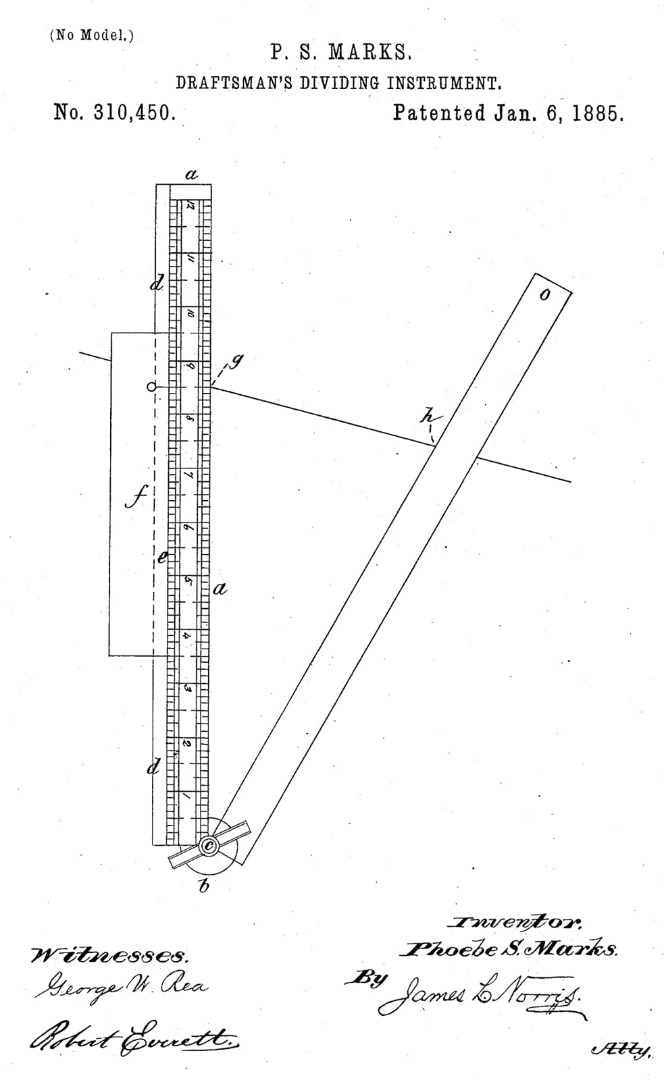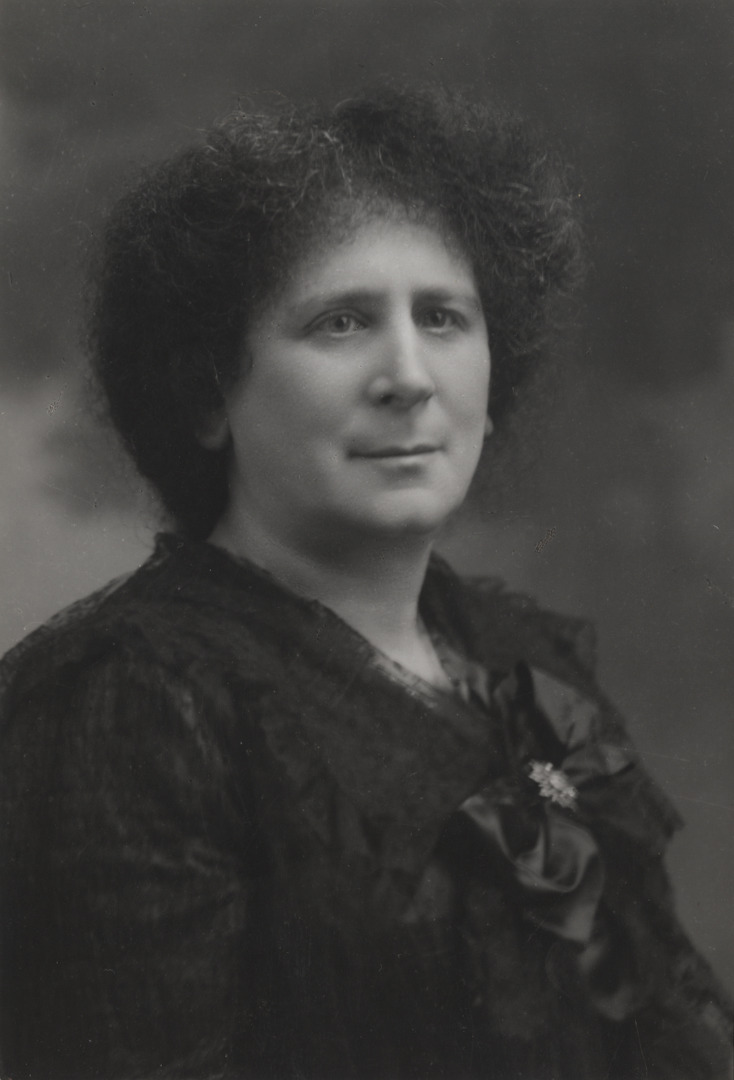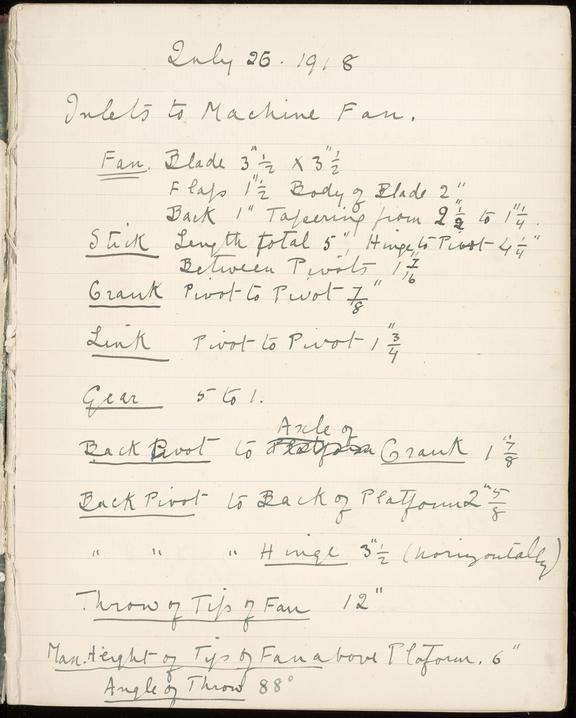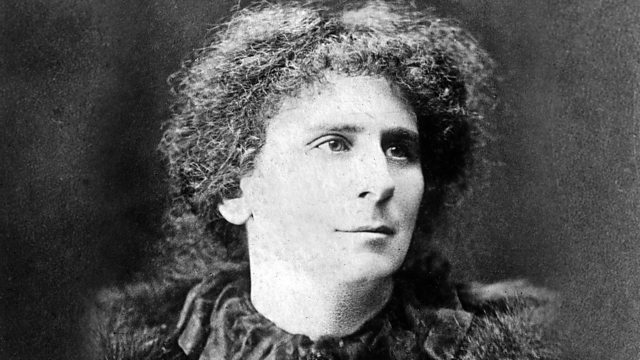Hertha Ayrton (1854-1923) was a British suffragist, physicist,

mathematician and inventor in a time when few women had access to opportunities in science, technology, engineering, and mathematics.
Ayrton was born Sarah Phoebe Marks in Portsmouth in 1854 to a relatively poor immigrant family of Polish origin. Ayrton was supported in her education and professional ambitions, first by better-off family members and later the wider suffrage community – almost all of them women. Throughout her life, she was an active member of the suffrage community arguing for the right for women to vote.
Ayrton made important contributions to the study of electric arcs, used in the late 1800s and 1900s for large public indoor and outdoor lighting. Her work on the properties of electric arcs led to her being the first woman elected to the Institution of Electrical Engineers, now the IET. She was also the first woman to read a research paper at a Royal Society meeting.
Her later research into water and air vortices resulted in a life-saving application, the ‘Ayrton anti-gas fan’, a simple hand-held device used to clear poisonous chemical gases from frontline trenches during the First World War.

In 1863, when Ayrton was nine, she was invited by her maternal aunt Marion Hartog, who ran a school in north-west London with her husband Alphonse Hartog, to live with her cousins and to be educated with them. It was through her cousins that Ayrton was introduced to science and mathematics and by the time she was sixteen, she was living independently and working as a governess.
Ayrton had grander ambitions though and was determined to study at Cambridge University, despite the fact that the university did not award degrees to women.
In 1874, Ayrton passed the Cambridge University Examination for women with honours in English and Mathematics. Two years later, Ayrton began studying mathematics at Girton College, one of the few all-female colleges at Cambridge University. She was able to attend thanks to the financial support from fellow members of feminist and social justice communities, of which she was an active participant.
Ayrton was also an active member of the Girton College community: she was the leader of the College Choral Society, founded the college fire brigade and also founded a mathematics club. Ayrton graduated with a third-class result in 1880, in part due to illness during her exams. In 1881, she was awarded in external BSc from the University of London.
While studying at Cambridge, Ayrton began working on her first invention and patent, a line-divider. A line divider is a mathematical tool and engineering drawing instrument and Ayrton patented the device after she graduated in 1884. It was the first of twenty-six patents she was granted during her lifetime. The line divider was positively reviewed by users and in the scientific press but was not a commercial success.

In 1884 Ayrton began attending evening classes and studied electricity and physics at Finsbury Technical College in London. Ayrton studied electro-technics (electricity and physics) at the college where she was just one of three women studying alongside 118 men. Ayrton’s lecturers included physics expert and renowned electrical engineer Professor William Edward (Will) Ayrton.
The two were married in 1885, a year after they met. One year later, they had a daughter, Barbara Bodichon, named after Ayrton’s mentor and supporter. In 1891, Ayrton’s mentor and her daughter’s namesake Barbara Bodichon died. Bodichon left Ayrton a sum of money which enabled Ayrton to support her ageing mother and to hire a housekeeper so that she might dedicate more time and energy to her research.
In the early 1890s, Ayrton began researching the properties of electric arcs. At first, she began by assisting her husband with his research but soon she took over the research herself.

Thereafter, she made notable contributions to the development and understanding of the electric arc, an early and powerful form of electric lighting.
Ayrton established two key points in relation to the working of electric arcs. Firstly, she discovered that the problems with electric arc lighting such as hissing, flickering and instability were the result of oxygen coming into contact with the carbon rods used to create the arc.
Secondly, Ayrton discovered that when oxygen was excluded, a steady arc was obtained and hence she was able to establish a linear relationship between arc length, pressure, and potential difference, the ‘Ayrton equation’.
Between 1895 and 1896, Ayrton published a series of twelve articles on her analysis, research and technical advances in the field of electric arc lighting in The Electrician, the premier electrical engineering periodical of the age. With these articles, she overtook her husband’s earlier work in this field and established her own credentials as an expert on the workings of the electric arc and in the field of electrical engineering more generally.
This recognition led to increased opportunities including the invitation to deliver her own paper on electric arcs before the Institution of Electrical Engineers (IEE, now IET). She was the first woman to read her own paper before this prestigious engineering society.
In 1899, Ayrton was elected a member of the institution (MIEE), a prestigious and widely recognised professional qualification. Thus, Ayrton became the first female member of the IEE and the first professionally recognised female electrical engineer.

Ayrton’s research interests were broad and at the turn of the twentieth century, her interests turned to researched water and air vortices, resulting in a life-saving application used during the First World War.
After the German Army first used poison gas at the Second Battle of Ypres in April 1915, many British scientists quickly began to adapt their research to counteracting this new and deadly weapon. In early May 1915 and shortly after the news of German use of gas had reached England, Ayrton presented a paper on differences in pressure near obstacles in moving water and began to consider how this might have practical application in terms of removing gas from the trenches.
Ayrton developed the ‘Ayrton anti-gas fan’, a simple hand-held device used to clear poisonous chemical gases from British frontline trenches during the First World War. Ayrton’s anti-gas fan was simple and consisted of a sheet of waterproof canvas supported and stiffened by a frame of cane and held by a hickory handle.
By mid-May 1915, Ayrton had developed a working model which she tested out in her friend and fellow suffragist Ernestine Mill’s back garden in Kensington.
The War Office initially dismissed her invention but by 1917 Ayrton had developed an improved mechanical version of her fan. After some delay, it was brought into use by the British Army and eventually over 100,000 Ayrton anti-gas fans were ordered. The fans were used to clear trenches, dug-outs and shell holes, and mine craters of poisonous gases although there was some dispute as to their true effectiveness.
Throughout her lifetime and with the strong support of her feminist communities, Ayrton made an immense and diverse contribution to mathematics, physics and electrical engineering.
Her incredible life can be illuminated by three key artefacts: the 1884 patent for her line-divider; her article series on the electric arc published in The Electrician in 1895; and the ‘Ayrton anti-gas fan’ developed to combat trench gas during the First World War.
Spanning four decades and three subject areas – mathematics, electrical engineering and physics – these accomplishments demonstrate the deep impact Ayrton had on these specialist technical and scientific subjects as well as on the emerging roles available to women in engineering.
Further reading
Bruton, Elizabeth, 2018, ‘The life and material culture of Hertha Marks Ayrton (1854–1923): suffragette, physicist, mathematician and inventor’ in Science Museum Group Journal Issue 10 https://dx.doi.org/10.15180/181002
Henderson, F, 2012, ‘Almost a Fellow: Hertha Ayrton and an embarrassing episode in the history of the Royal Society (1902)’, https://blogs.royalsociety.org/history-of-science/2012/03/08/almost-a-fellow/
IET Archives, ‘Archives Biographies: Hertha Ayrton’ https://www.theiet.org/resources/library/archives/biographies/ayrtonh.cfm
Jaffé, D, 2003, Ingenious women: from tincture of saffron to flying machines (Stroud: Sutton)
Sharp, E, 1926, Hertha Ayrton: A Memoir (London: Edward Arnold & Co)
